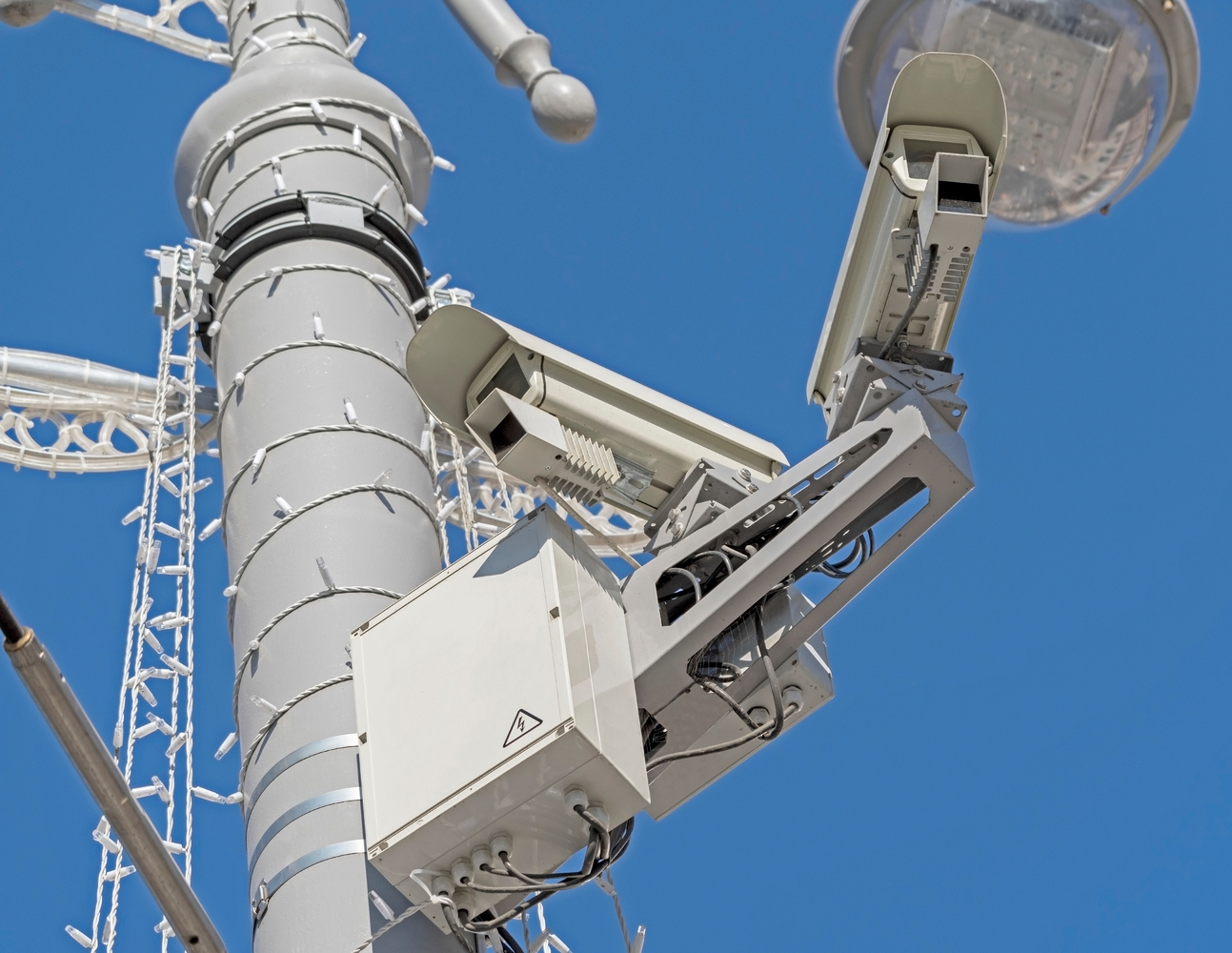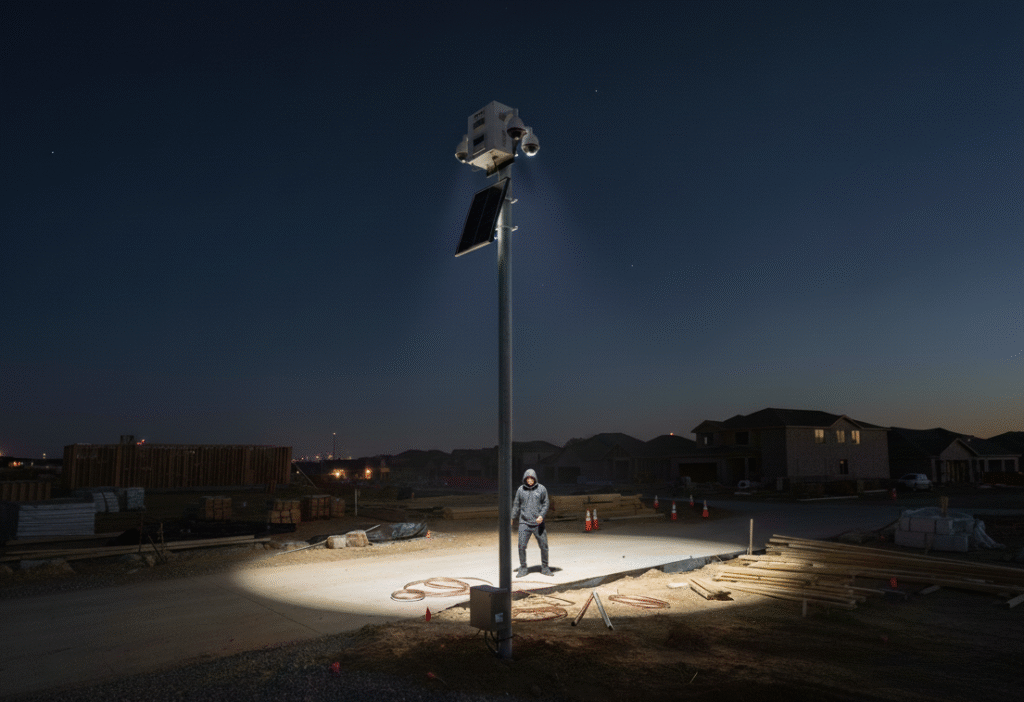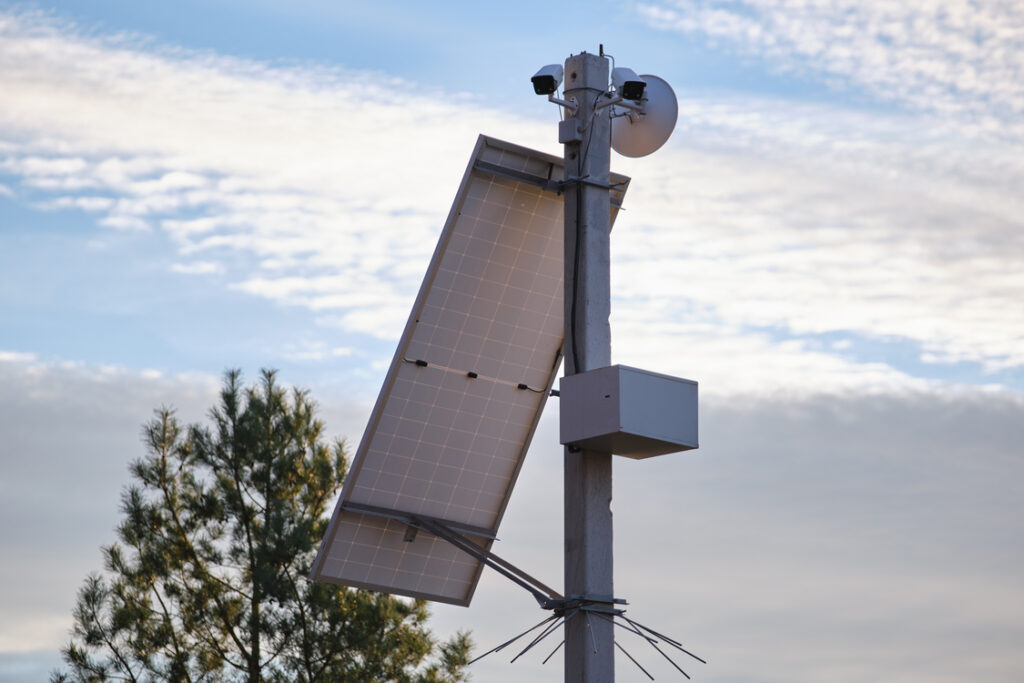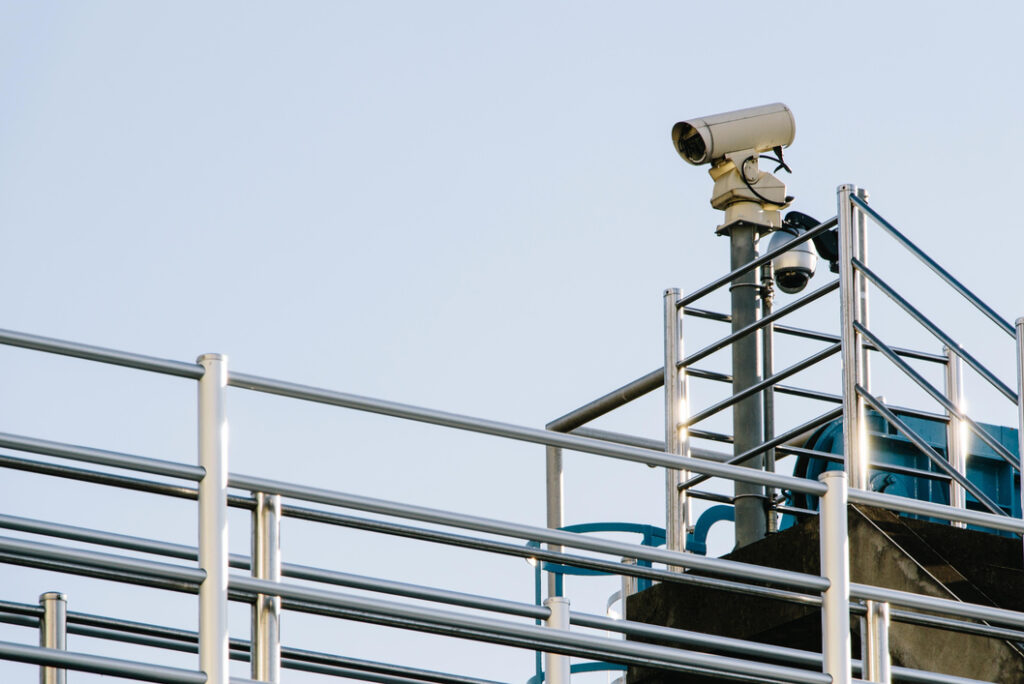Remote construction projects present a unique security challenge. When your jobsite is miles from the nearest power line, traditional security solutions become impractical. But here’s the reality: remote doesn’t mean unprotected. Thanks to dramatic advances in solar technology, battery storage, and satellite connectivity, securing off-grid projects is now not only feasible—it’s remarkably cost-effective. A properly equipped solar and battery system paired with cellular or satellite connectivity transforms an isolated jobsite into a protected asset, providing 24/7 surveillance without the need for generator fuel runs or expensive on-site personnel. For general contractors managing remote projects, these advances represent a game-changing opportunity to reduce theft, prevent vandalism, and eliminate one of the costliest aspects of remote site security: personnel.
The Challenge of Remote Site Security: Why Traditional Solutions Fail
Remote construction sites are exceptionally vulnerable. Whether you’re working on a utility infrastructure project in rural areas, a pipeline construction site, or a remote facility build-out, the isolation that makes these projects difficult is precisely what makes them targets for theft and vandalism. Traditional security approaches often fail. Deploying on-site security guards isn’t just expensive—it’s often impractical, requiring transportation, lodging, meals, and rotation to prevent fatigue. Periodic inspections only provide snapshots of security, rather than continuous protection.
Solar Power Technology: From Specialty Application to Standard Solution
Modern commercial solar panels can now power comprehensive security systems on remote sites. Pre-engineered solar systems come complete with mounting hardware, charge controllers, battery enclosures, and inverters—fully integrated and ready to deploy. Battery autonomy ensures operation through cloudy periods or maintenance, keeping cameras and communication equipment running continuously.
Battery Storage Advances: Power When You Need It Most
Modern lithium-ion batteries offer high energy density, rapid charging, and 2,000+ charge-discharge cycles, maintaining performance in extreme temperatures. They intelligently manage power, ensuring uninterrupted operation for cameras, communication devices, and lighting, with scalability for single towers or multi-camera arrays.
Connectivity: Making Your Remote Security System Accessible
Connectivity is critical. Cellular networks now reach many remote areas, and satellite options like Starlink provide true global coverage. Hybrid connectivity ensures continuous operation even if one network fails, keeping your security system online 24/7.
The Real Cost Savings: Eliminating Personnel as a Security Solution
Remote solar-powered camera systems drastically reduce personnel costs. Traditional security guards cost over $170,000 annually for 24/7 coverage at a single site. In comparison, a solar-powered system with monitoring ranges from $2,000-$8,000 in setup, plus $200-$600/month for monitoring. One month of guard cost can cover multiple months of a remote security system, delivering immediate ROI while eliminating logistical challenges.
Deployment and Maintenance: Simpler Than You’d Expect
Modern remote security systems are low-maintenance. Pre-engineered solar systems are easy to install, with minimal ongoing maintenance—usually just quarterly inspections and cleaning. Advanced systems store local data during network outages and automatically sync when connectivity is restored, ensuring no loss of visibility.
Practical Implementation: Choosing the Right System for Your Site
Before deploying a system, assess solar resources, connectivity options, and security requirements. Start with a basic system, then scale based on actual site needs. Over-sizing solar arrays slightly and designing for extended battery autonomy ensures robust operation year-round.
Best Practices for Remote Solar Security Systems
- Over-size your solar array by 20-30% for consistent operation.
- Design battery capacity for at least 3-4 days of autonomy.
- Position cameras to monitor high-theft-risk areas and eliminate blind spots.
- Integrate alerts with your team using monitoring services.
- Monitor system health monthly and adjust as needed.
- Plan for seasonal changes affecting solar panel efficiency.
Conclusion
Remote construction projects no longer need to compromise security due to distance or lack of power. By combining solar power, advanced battery storage, and reliable connectivity, you can achieve 24/7 surveillance without the cost and complexity of on-site personnel. These solutions not only protect your assets and materials but also improve operational efficiency and project profitability. For more information on how to implement these systems, visit our About Us, explore our Products, check our Services, or see our Pricing. Questions? Visit FAQ or Contact Us to speak with our team.




